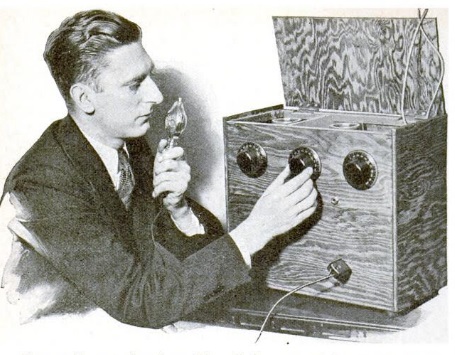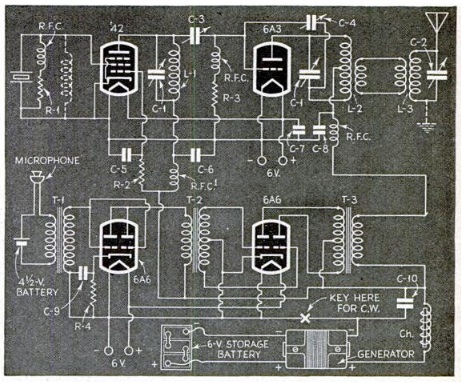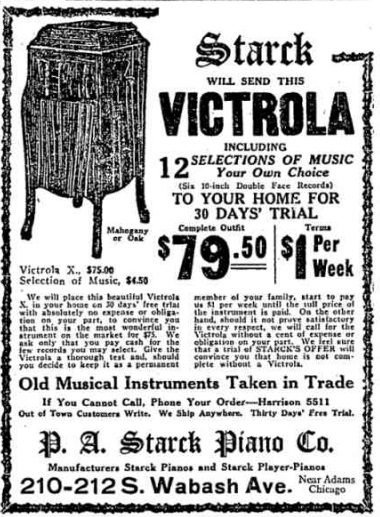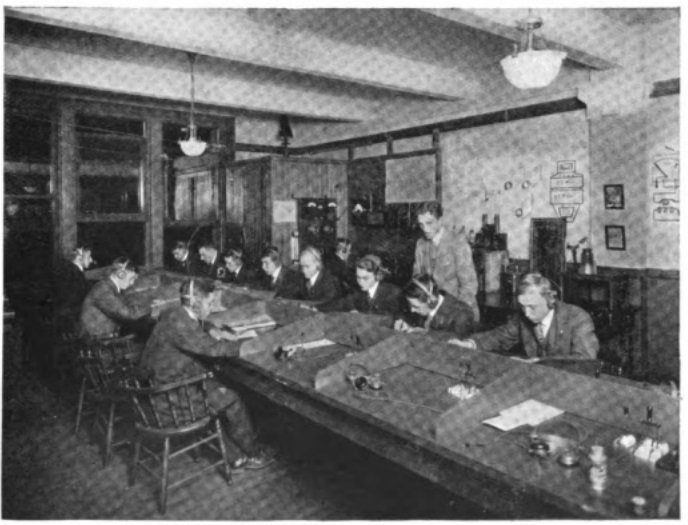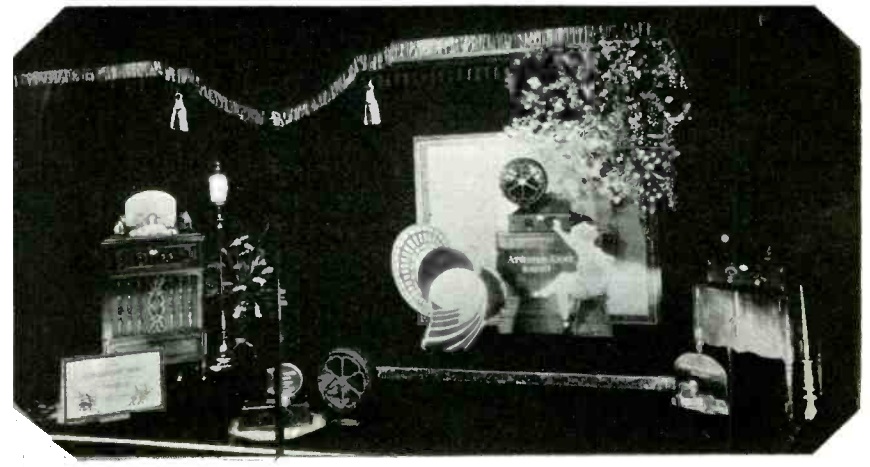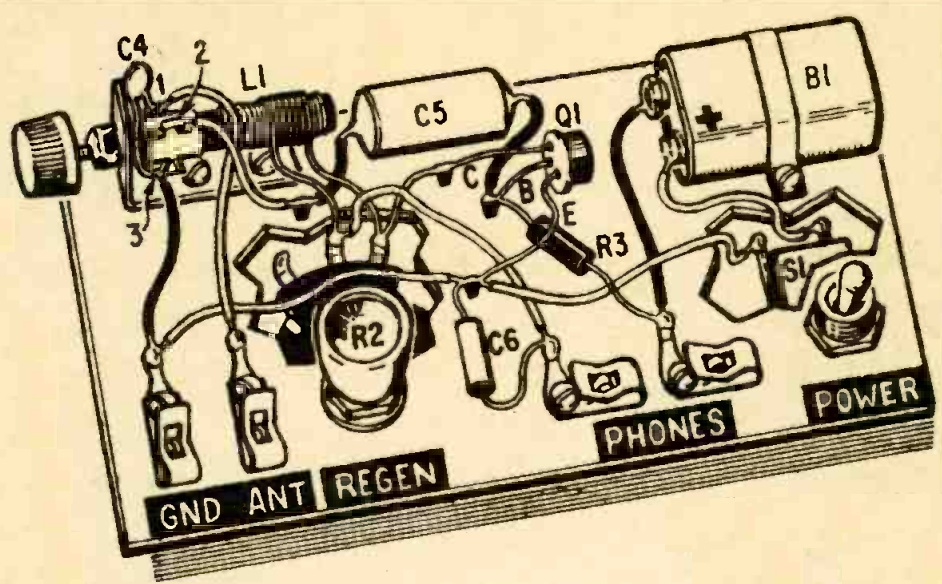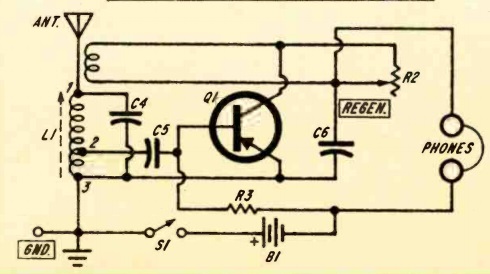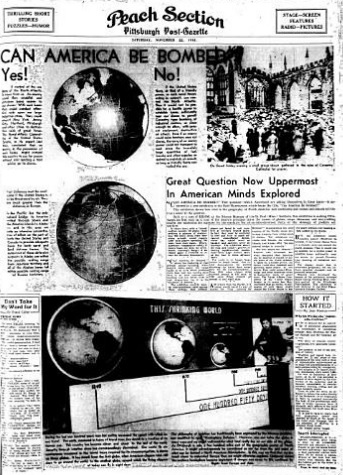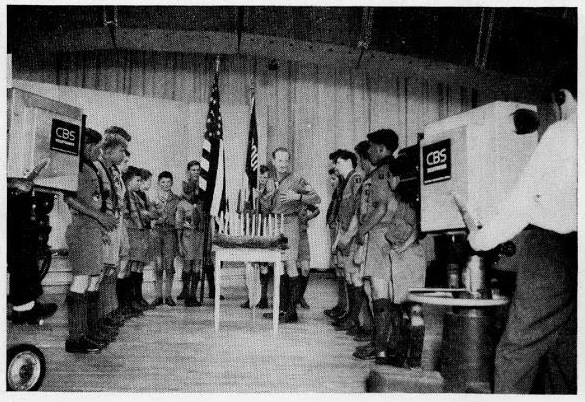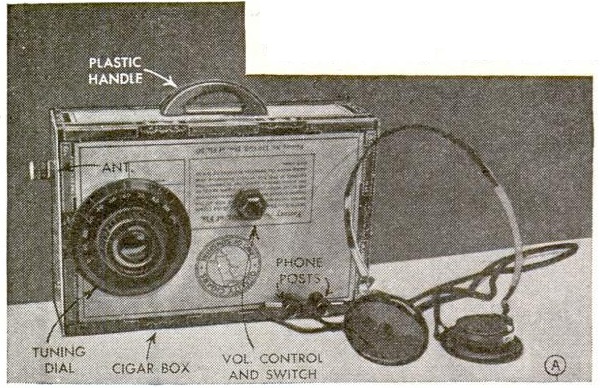
The November 1943 issue of Popular Mechanics carried the plans for this wartime emergency receiver. Built in a cigar box, the set was an updated version of the “Hurricane Receiver” previously published by the magazine and featured here earlier.
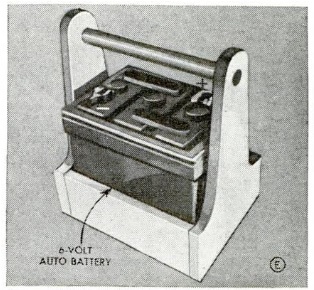 The article noted that the set could be used under blackout conditions in areas where a power line would be unavailable. Both the filaments and B+ were provided by six volts, which could come either from dry cells, or obtained from the nearest automobile. For portable use in shelter conditions, the article suggested a wood carrying case such as shown here for transporting the battery.
The article noted that the set could be used under blackout conditions in areas where a power line would be unavailable. Both the filaments and B+ were provided by six volts, which could come either from dry cells, or obtained from the nearest automobile. For portable use in shelter conditions, the article suggested a wood carrying case such as shown here for transporting the battery.
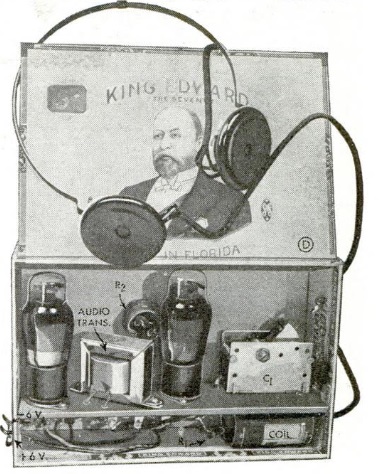 The set was said to be of considerably more volume and greater range than the original model. It employed two 6G6-G tubes, and the article noted that these tubes were commonly found in the junk boxes of radio students, experimenters, and servicemen. The set employed one tube as the regenerative detector, with the second one serving as audio amplifier.
The set was said to be of considerably more volume and greater range than the original model. It employed two 6G6-G tubes, and the article noted that these tubes were commonly found in the junk boxes of radio students, experimenters, and servicemen. The set employed one tube as the regenerative detector, with the second one serving as audio amplifier.
The coil was wound on a cardboard tube, and the wire could be salvaged from a burned out choke or audio transformer. A ground connection was recommended for maximum results, and a 20 foot indoor antenna could be used for local stations, although a longer outdoor antenna would pull in stronger signals.
With this set and a 6 volt battery, the owner would be able to listen to local stations for emergency safety and blackout instructions.

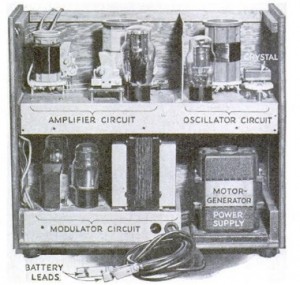 Eighty years ago, the November 1936 issue of Popular Science carried the plans for this portable 20 watt AM transmitter for 160-20 meters.
Eighty years ago, the November 1936 issue of Popular Science carried the plans for this portable 20 watt AM transmitter for 160-20 meters.
